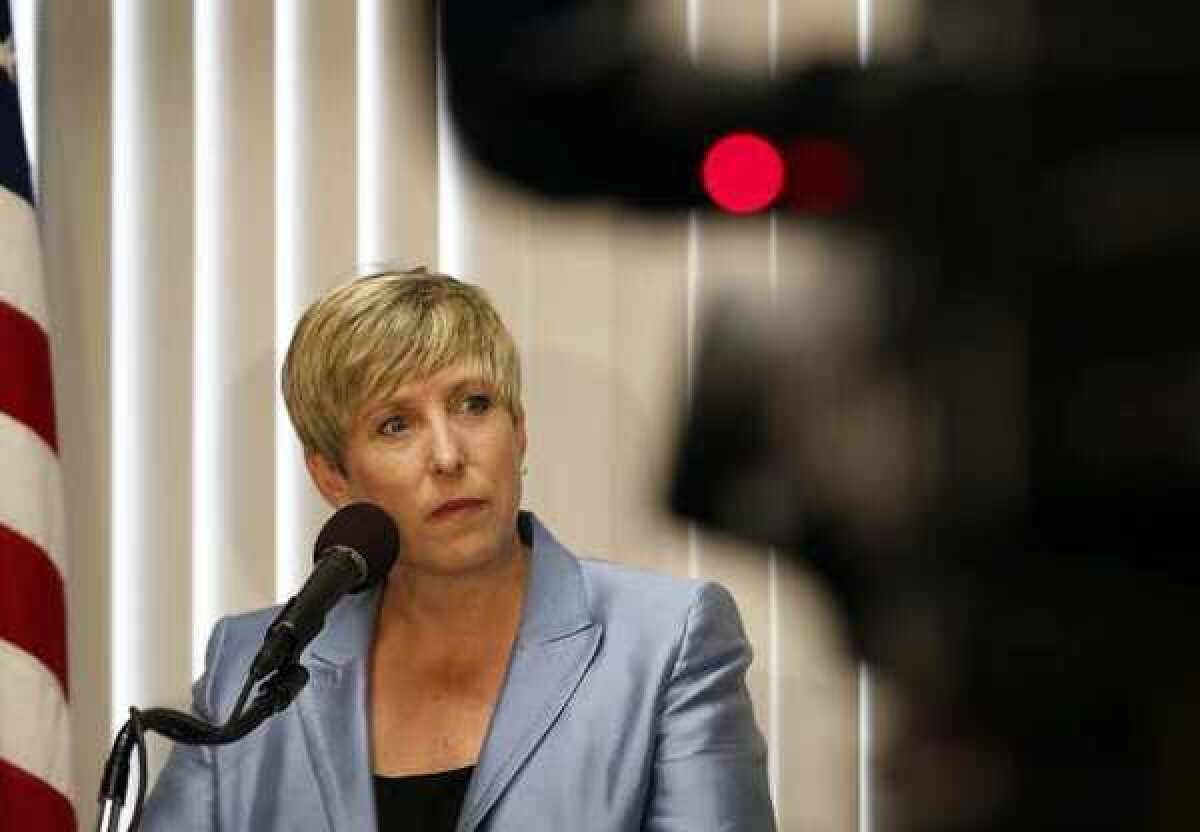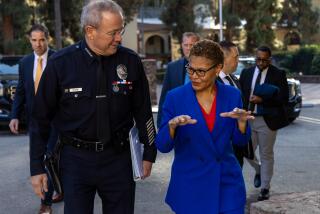Audit finds LAFD takes longer on medical calls since budget cuts

Los Angeles firefighters are taking longer to get to medical emergencies following steep budget cuts approved by Mayor Antonio Villaraigosa and the City Council, according to a much-anticipated audit of Fire Department response times released Friday by City Controller Wendy Greuel.
Greuel found that “real response times” to medical calls have increased on average about 20 seconds — to seven minutes and eight seconds — since a series of department cutbacks were ordered beginning in 2009.
Her finding comes amid a recent flurry of often-conflicting response time figures for the Fire Department, and Greuel said it measures what is most important to the public: how long it takes rescuers to get to a victim once the department answers a 911 call.
Echoing another report released this week by a different independent analyst, Greuel’s audit found major problems with the department’s data. Almost one-third of the 1.9 million responses analyzed by auditors were missing such critical information as whether the calls were emergencies or not. That prevented auditors from comparing the department’s performance to a widely accepted national response time standard, she said.
At a news conference, Greuel chided fire officials for undercutting public confidence in the department’s performance by using inconsistent methodology and not adequately explaining changes in its formula for calculating response time statistics.
In March, the department admitted it had been providing city officials with reports that made it appear rescuers were getting to emergencies faster than they actually were. Officials offered conflicting explanations for the error. They acknowledged that in separate reports to lawmakers, they had used computerized projections instead of actual data.
Councilman Mitchell Englander, who chairs the Public Safety Committee, complained that the inconsistencies meant lawmakers were making decisions based on bad information.
“If it’s garbage in, it’s garbage out,” said Englander, who has called for a real-time data analysis program at the Fire Department modeled after the Los Angeles Police Department’s COMPSTAT initiative. “The public safety and budgetary policies that we create or change depend on having accurate data.”
Greuel’s audit found that the department’s performance has improved in some areas.
Response times in fire and non-emergency incidents are 19 seconds faster on average since the budget cuts. And the department is doing a better job of getting paramedics — as opposed to firefighters who can provide basic medical aid — on the scene of emergencies. Villaraigosa cited that improvement as a positive sign.
Fire officials say there are more paramedics in the field now — including some riding with firefighters on engines — than before the cuts.
Villaraigosa said the Fire Department also is looking to improve its 911 call dispatching time. Greuel’s audit found that the time is takes 911 dispatchers to alert rescuers in the field has been increasing in recent years. A Times analysis of Fire Department data published this week found a similar pattern.
Fire Chief Brian Cummings said Friday that 911 call processing is “very complex,” and thoroughness is key. He said he had not had a chance to read Greuel’s report. “Our goal is to respond to every incident with the appropriate resource,” he said, “as quickly as possible so we can render aid.”
More to Read
Sign up for Essential California
The most important California stories and recommendations in your inbox every morning.
You may occasionally receive promotional content from the Los Angeles Times.













